Staircase Building Regulations in the UK/ Document K
Staircases are an essential part of our homes, providing access to different levels and adding to the overall aesthetic. However, when building or renovating a staircase in the UK, it's crucial to adhere to specific building regulations to ensure safety and functionality. This guide covers all you need to know about staircase building regulations in the UK.
Here's what you need to know about staircases:
- Dimensions and Steepness: The size and slope of the staircase must meet specific standards to ensure safety.
- Required Headroom: There must be adequate vertical space above the staircase to prevent head injuries.
- Winder Restrictions: Stairs that turn corners should be designed to facilitate safe and easy navigation.
- Landing Regulations: Proper landings are crucial to provide stability and rest points.
- Handrail Specifications: Handrails must be sturdy and appropriately sized for grip.
- Staircase Pitch: The angle of the staircase should be within a safe range to prevent falls.
According to the Building Regulations (Part K: Protection from falling, collision, and impact), staircases must be designed and constructed to minimise risks. For instance, each step should be level to prevent tripping. In non-domestic settings, it's advisable to use solid risers rather than open risers to eliminate the risk of feet or walking aids getting caught under a step.
For any questions regarding staircase regulations, feel free to contact us at sales@ovoms.com or call 020 3667 3330
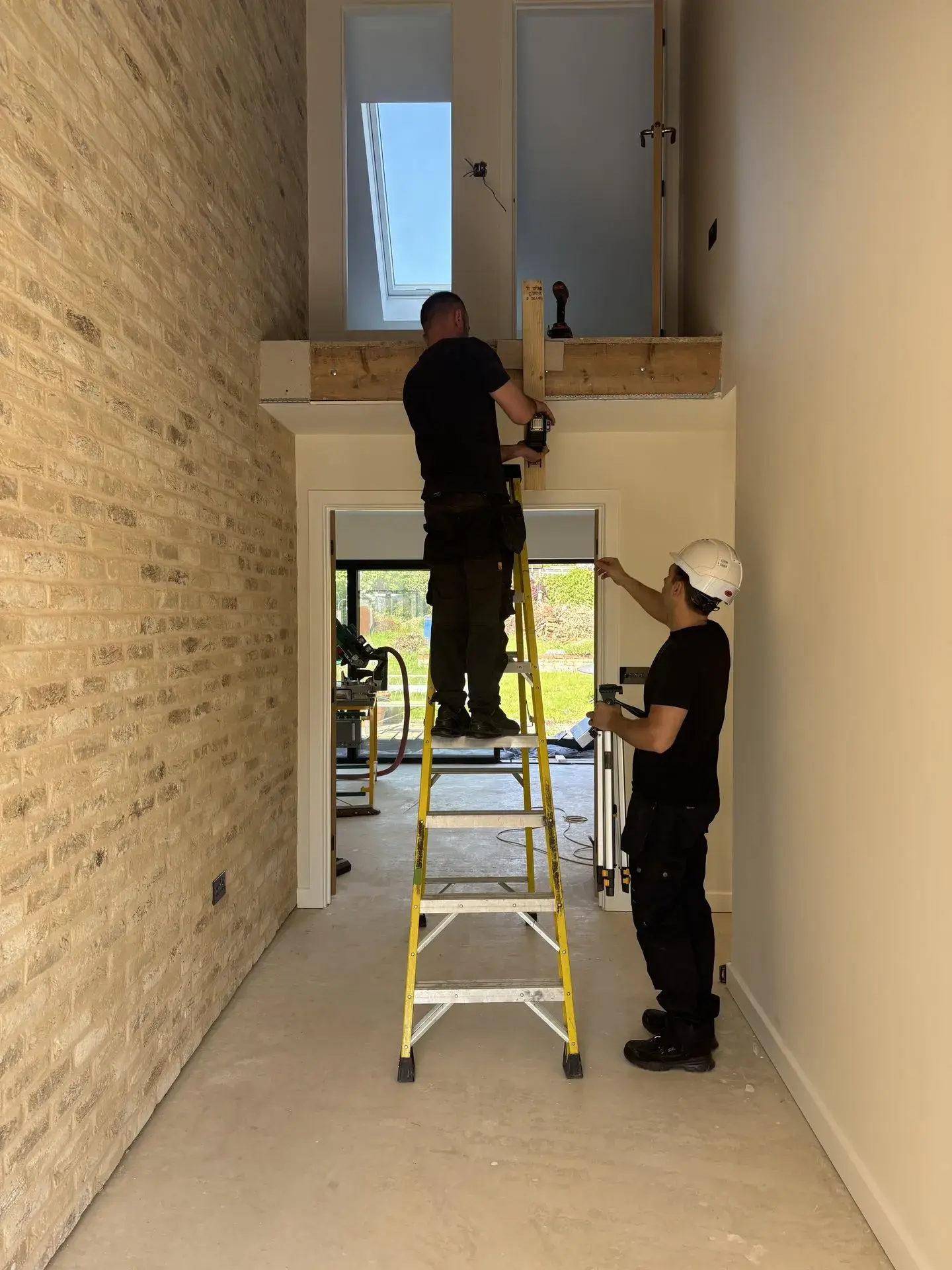
Why Are Staircase Building Regulations Important?
Staircase regulations exist to ensure that all staircases are safe to use. These rules cover various aspects such as step dimensions, handrail requirements, and overall design. Whether you're planning a staircase makeover or constructing a new one, understanding these regulations is essential.
Key Regulations and Recommendations
Staircase Width and Height
- Minimum Width: For residential homes, the recommended minimum width is 750mm. For loft conversions, it can be reduced to 600mm.
- Maximum Number of Steps: Typically, domestic properties can have up to 16 steps, but most homes will have around 14.
Step Dimensions
- Step Height (Rise): Each step must have a rise between 150mm and 220mm.
- Step Depth (Going): Each step must have a going between 223mm and 320mm.
- Consistency: All steps must have the same rise and going to prevent accidents.
Stair Pitch
Maximum Pitch: The pitch, or the slope, of your staircase, should not exceed 42°. This is calculated by dividing the rise by the going.
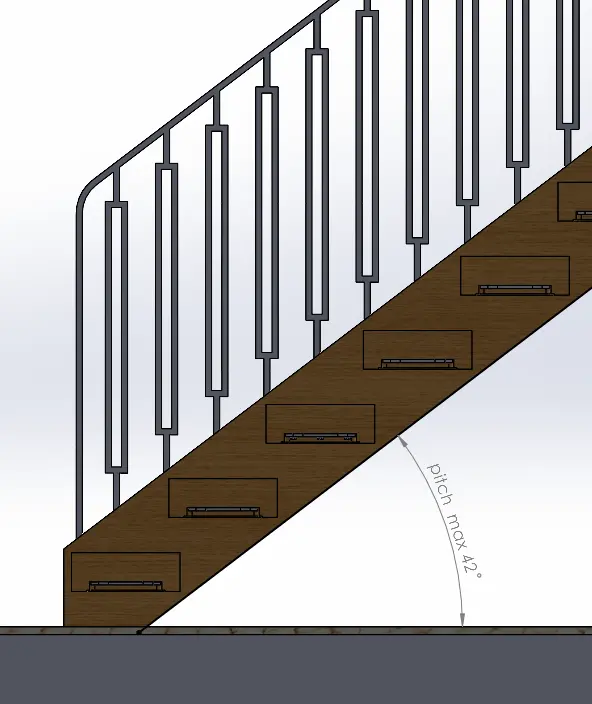
Headroom for stairs
For All Buildings:
On the access between levels, provide the minimum headroom of 2m.
For buildings other than dwelling and for common access areas in buildings that contain flats.
Provide all means of escape routes with a minimum clear bedroom of 2m, except in doorways.
For loft conversions in dwellings- Where there is not enough space to achieve the height shown in Diagram.
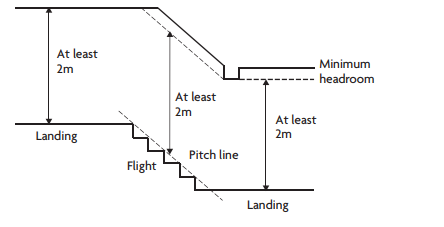
Where there is not enough space to achieve 2m headroom reduced headroom as shown will be satisfactory.
The 18 Rule for Staircases
A common industry standard is the 18 Rule, where the rise and going of each step should add up to 18 inches. This ensures comfortable stride lengths, making the staircase easy to use.
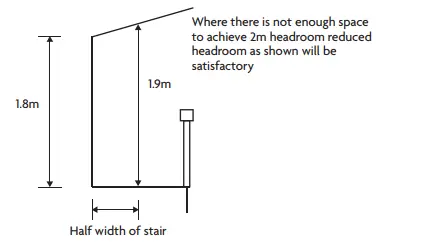
Landing Regulations
Landings are critical for safety and must adhere to the following rules:
- Distance from Door Openings: The space between any door opening and the staircase should be at least 400mm.
- Clearance: Landings must be clear of any permanent obstructions.
- Handrail Height: Handrails on landings should be between 900mm and 1000mm from the floor.
- Level Surface: Landings at the top and bottom of stairs must be level. Landings at ground level can have a slight gradient, not exceeding a ratio of 1:20.
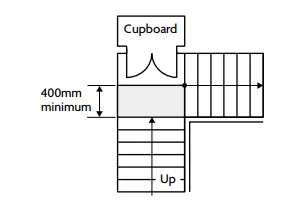
Alternating tread stairs in dwellings
You may use alternating tread stairs - in one or more straight flights- only in a loft conversion, and only when there is not enough space. The construction of an alternating tread stair should comply with Approved Document K. Provide a minimum clear headroom of 2m. Position the top of the handrail 900mm to 100mm from the pitch line or floor. If the stairs are 1000mm or wider: provide a handrail on both sides.
Space Saver Stairs
Also known as loft stairs, space saver stairs are used when there's limited space. They must have a rise of no more than 220mm and a going of at least 220mm. Handrails must be installed on both sides.

Handrail Requirements
Handrails are crucial for safety, especially on stairs. The regulations for handrails include:
- Necessity: Handrails are mandatory for all staircases.
- Placement: If the staircase is less than one meter wide, a handrail is required on one side. If wider, handrails are needed on both sides.
- Height: Handrails should be placed between 900mm and 1000mm above the staircase steps.
- Spindle Gap: Spindles should be placed close enough to prevent a 100mm sphere from passing through to ensure child safety.
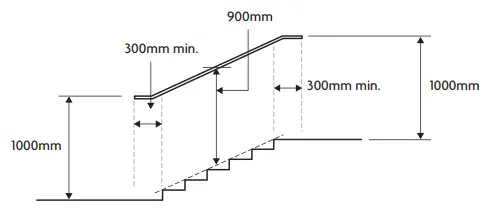
Design of ramps for all buildings
Design all ramps and landing in accordance with Diagram.
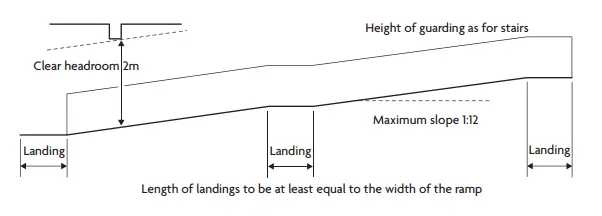
Compliance and Expert Help
Adhering to staircase building regulations in the UK is essential for safety and functionality. For more detailed information and to ensure compliance with the latest regulations, contact us at sales@ovoms.com or 020 3667 3330. You can download Document K Building Regulations outlines the requirements for stairs.
